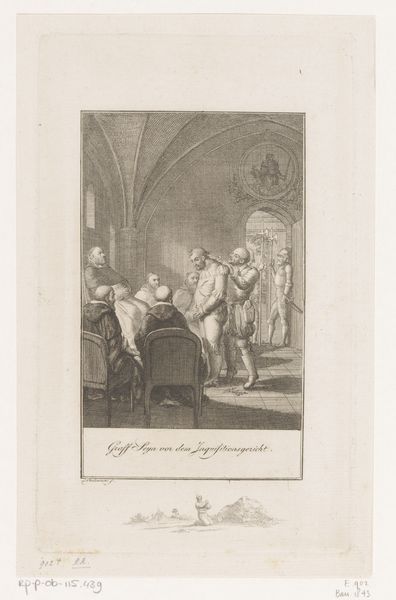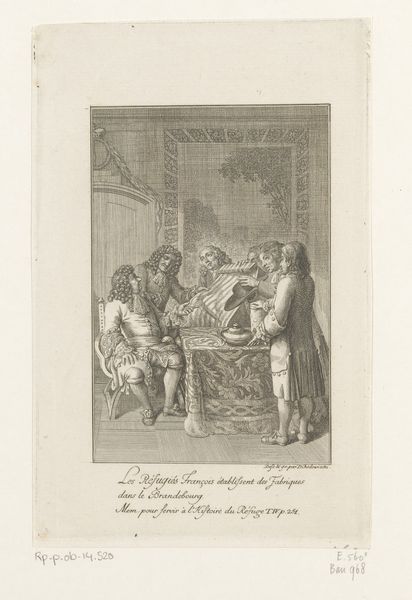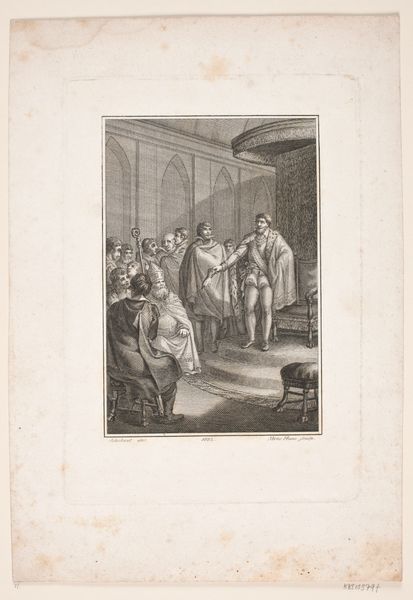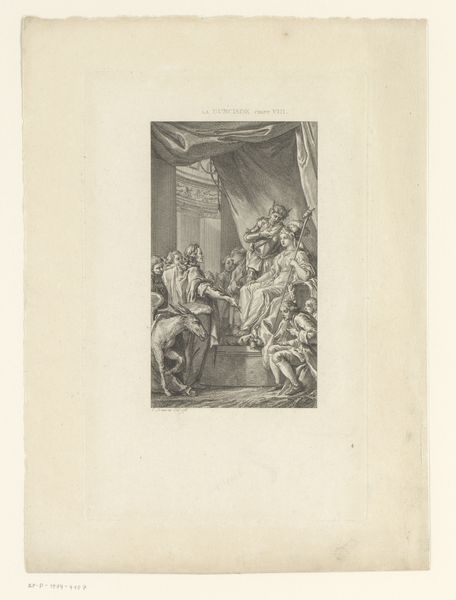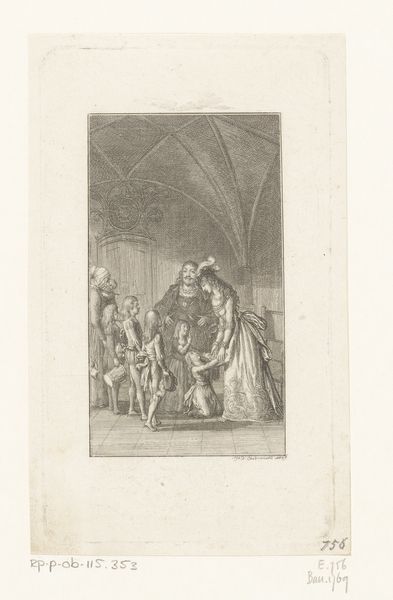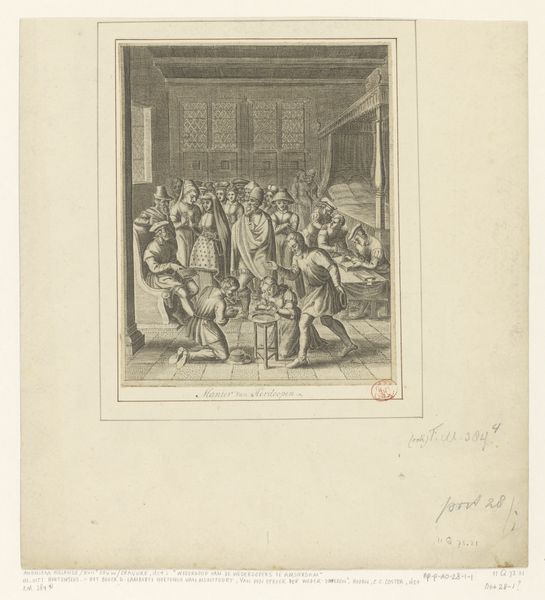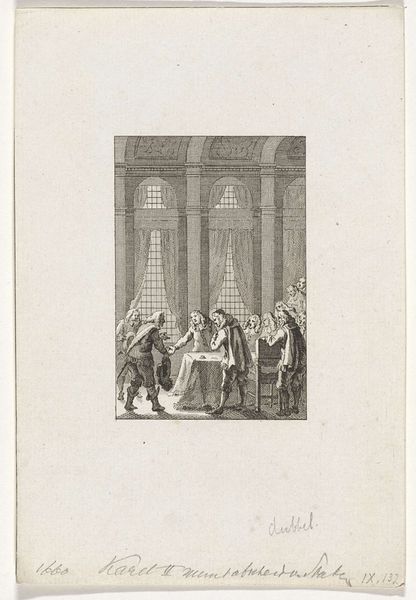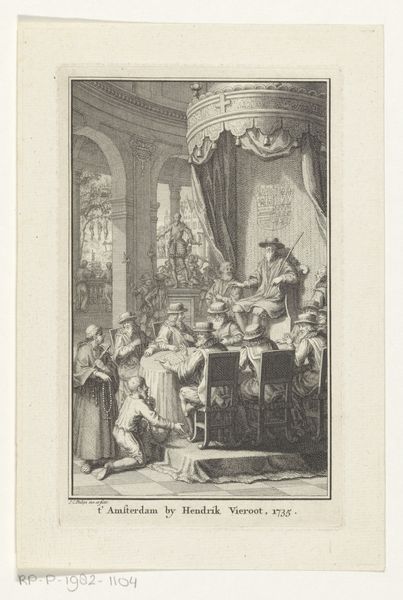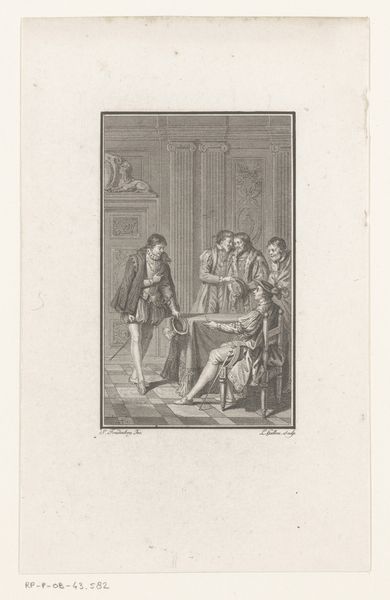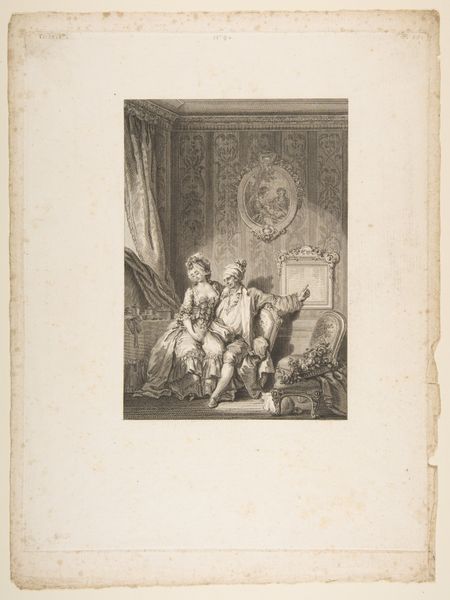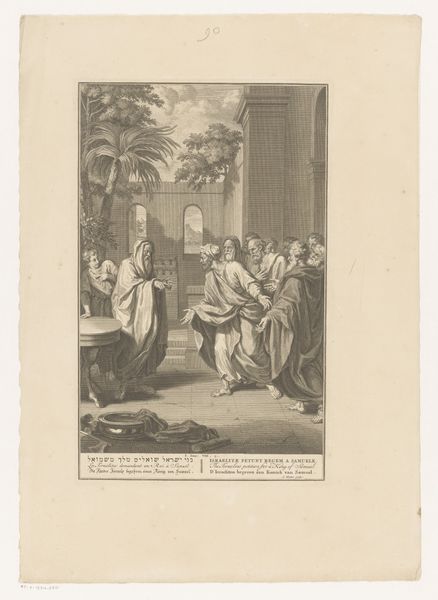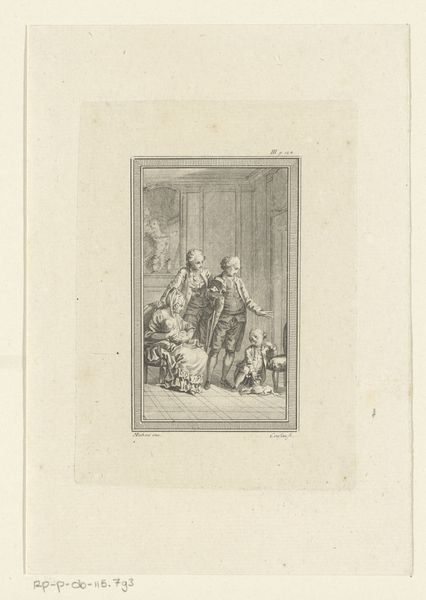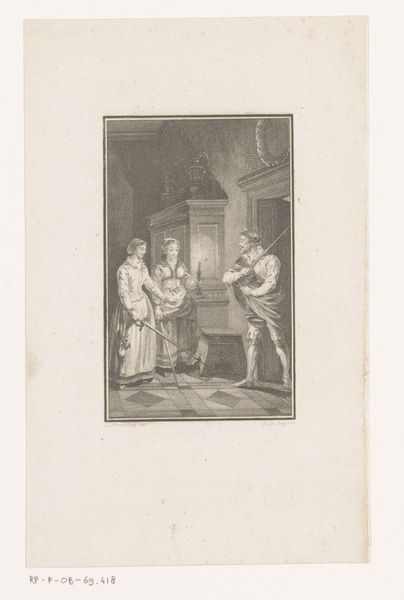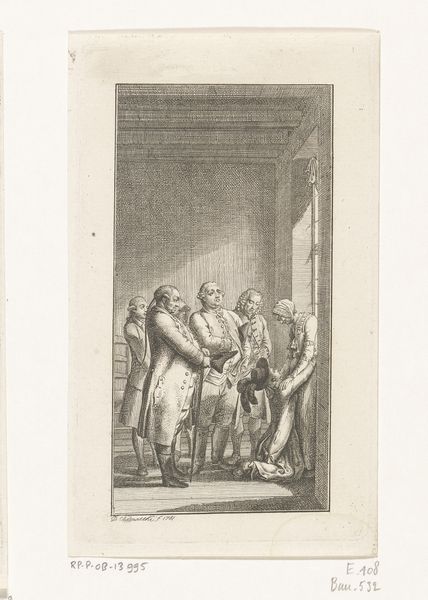
Dimensions: height 224 mm, width 135 mm
Copyright: Rijks Museum: Open Domain
Curator: Daniel Nikolaus Chodowiecki created this etching and engraving entitled "Graaf van Sayn voor de inquisitie," or "Count of Sayn before the Inquisition," around 1798. Editor: Wow, even just as lines on paper, you can feel the chill in that room. The figures are positioned so formally, and the linework is precise, but that central figure… his vulnerability is palpable. Curator: Absolutely. Chodowiecki’s printmaking here leverages the medium's inherent ability to create detailed narratives with broad accessibility. Notice the stark contrast—it accentuates the power dynamic between the accused and the assembly. Prints like these served a vital social function, circulating critiques of power structures throughout society. Editor: The craftsmanship too… the hatching and cross-hatching must have been meticulous. Look at the way the light falls. The shadows deepen the somber mood, like the weight of the judgment pressing down. It makes you think about all the labor behind these images. And then the labor implied within it too… Curator: Exactly, and think about how the making of prints, often considered “minor art,” allowed commentary and reach unattainable to traditional painted portraits hanging in elite galleries. He uses a traditionally reproductive process to offer what reads now as powerful commentary. Editor: Right. So it brings into question notions of art history in a more fundamental way... Beyond the narrative, it is hard not to wonder about the count himself... and the judgment of those people surrounding him and if that act was just and what type of justice should look like... a heavy set of burdens on those thin etched lines. It makes you reflect not just on what is in front of you, but it moves that thought in unexpected, more far-reaching places. Curator: I agree, and Chodowiecki’s engagement with the processes involved directly influences both the meaning and circulation. It speaks to the socio-political role these visual narratives played, far removed from simple courtly decoration. Editor: It's more than just history; it’s an echo resonating through time, prompting us to reflect on our own values and judgments and consider if there were other narratives surrounding them or us that could be explored if we would let them move us somewhere unexpected... like that simple black ink etched in white paper just did.
Comments
No comments
Be the first to comment and join the conversation on the ultimate creative platform.
